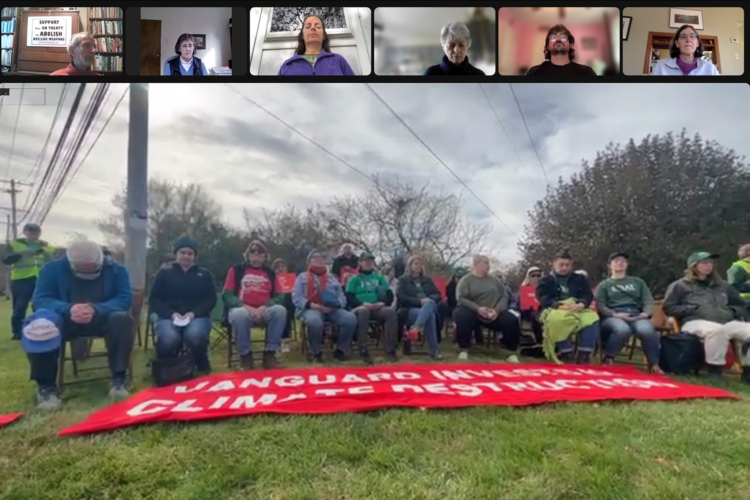Military Jets & Environmental Restoration

By Katherine van Wormer.
An issue of immediate concern to the Madison (WI) Friends is government’s selection of our airport as home for the notorious F-35 fighter planes. The Madison Friends’ Minute begins:
As Quakers, we seek to remove the circumstances that foster war, based on our belief there is that of God in everyone. That belief has been shown to turn adversaries into friends, while to prepare for war creates a threat, making enemies of people who might otherwise be our allies. The nuclear-capable F-35s have been designated a part of the US strategic nuclear bomber force. They can each carry 2 nuclear warheads up to 4 times more powerful than the bombs that destroyed Hiroshima and Nagasaki, which caused hundreds of thousands of deaths…If the Truax F-35s are given a “nuclear mission”, the Air National Guard will become complicit in the nuclear bombing of other nations, and Truax [Air National Guard Base] itself will become a military target.
The letter goes on to discuss the water contamination associated with these military jets, but the argument that is carrying the most weight in the local community relates to the high-decibel noise. The air force acknowledges that thousands of people who live near the airport, will be exposed to frequent blasts of a magnitude (as high as 100 decibels) at take-offs and landings that could be damaging to young children.
Although we cannot undo all or even most of the human-made damage that has been done in this post-modern industrial age, we protest more destruction and we work to replenish our natural resources and help restore the freshness of the air, soil, and water.
If we agree with Wendell Berry that the natural environment is a victim of abuse and oppression in the same way that human beings are subject to oppression, then we can work toward restoration. Just as human victims need to have their voices heard and receive some form of justice, so too does the natural environment.
Restorative justice aims to accomplish reconciliation and understanding among victim, offender, and community following an act of wrongdoing. The goal is to repair the damage insofar as this is possible, to provide some form of reparations. As applied to environmental restoration, the victims may be thought of as the people whose health has been damaged by the polluted air, soil, or water, or it may be the earth itself. What is required is accountability for the offender (for example, a polluting chemical company), action by the community, and reparations for the victim. An environmental policy agenda must be developed to restore life and replenish what was lost.
Environmental restoration must consider ways to hear the voice of the earth’s nonhuman inhabitants. This might involve nothing less than a complete rethinking of our relationship with the natural world. Even now efforts are being made toward coral reef restoration in Australia and to restore wetlands in Louisiana for protection from hurricanes. The World Health Organization recommends policies and individual choices that reduce greenhouse gas emissions such as, developing cleaner energy systems, and promoting widespread use of public transportation and cycling or walking as alternatives to using private vehicles. If such corrective strategies are carefully applied, nature, which has an extraordinary power to regenerate, will show us the way to healing the planet.
The first requirement of environmental restoration becomes listening to the Earth and heeding its call. How do you learn to listen to the earth? What is the starting point? You can begin by reading some of the nature poems from the Romantic era; you can also study paintings from the same period. Then, turning to science, read the facts about what is happening to the planet. Better yet, take a trip to a country like Norway and see how the people there preserve and protect their natural surroundings. Talk to members of a Native tribe to grasp their appreciation for Mother Earth. Above all, go directly to nature and listen. And do as the Bible says, “Speak to the earth, and it will teach thee” (Job, 12:8).
In contrast to forces that are destructive to human life and a threat to the planet, like the F-35s, there are also forces for sustainability and restoration. The success of such pro-active steps will determine the shape of the physical environment that we impart to future generations, and ultimately, the survival of life itself.
Katherine van Wormer is a member of Madison Friends Meeting in Wisconsin and recently retired as professor of social work from the University of Northern Iowa.


